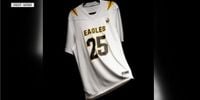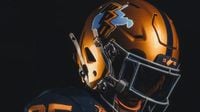College athletics is on the brink of a major transformation, and it’s all about the jersey. Sponsor patches—long a staple in international soccer and now common in America’s top professional leagues—are poised to make their debut on college team uniforms. The move, expected within months, could unlock hundreds of millions of dollars in new revenue for power-conference schools and Notre Dame, according to Learfield President and CEO Cole Gahagan.
"There’s no reason why college should sit behind those leagues with that opportunity, as sizable as it is," Gahagan told The Associated Press, referencing the lucrative impact patches have had in the NBA, NHL, MLS, and Major League Baseball. Last year alone, 23 MLB teams generated a staggering $204 million from jersey patches, according to sports marketing data firm SponsorUnited. It’s a number that has college athletic directors and rights holders buzzing with anticipation.
But why now? The answer is simple: money—and lots of it. With the NCAA’s recent shift toward revenue-sharing with athletes, colleges are under growing pressure to find new ways to fund these substantial payments. Nebraska and Texas Tech, for example, are each spending the maximum $20.5 million on direct revenue-sharing payments to athletes for the 2025-26 school year. As expenses rise, so too does the need for creative solutions.
Enter the sponsor patch. For decades, international soccer clubs have sported sponsor logos on the front, back, or sleeves of their kits, turning uniforms into valuable real estate for brands. U.S. pro leagues followed suit, with the NBA and NHL embracing jersey advertising and Major League Baseball jumping on board last year. The NCAA, however, has historically drawn a hard line—allowing only the apparel sponsor’s logo, and nothing more, on college uniforms.
That stance is changing. Last year, the NCAA gave the green light to commercial advertisements on football fields, a move widely seen as a precursor to uniform patch approval. Nebraska athletic director Troy Dannen didn’t mince words: "It’ll come, and it should come. As part of the NCAA modernizing its rules, it’s overdue." The sentiment is echoed across the landscape, as school leaders recognize the need to modernize and maximize their revenue streams.
Still, there are hurdles to clear. The biggest? Exclusivity clauses in schools’ contracts with apparel giants like adidas, Nike, and Under Armour. These brands typically prohibit any marks from other corporate sponsors on the uniforms they supply. But Gahagan remains optimistic, noting that Learfield and other stakeholders have had promising discussions with apparel companies to ease these restrictions. In December 2024, Learfield announced a program offering additional marketing opportunities for apparel providers in exchange for allowing other jersey patches—a sign that compromise may be on the horizon.
Texas Tech athletic director Kirby Hocutt shares the optimism. "I've found that adidas in everything we’ve had conversations about—jersey patches included—has been open minded and reasonable and willing to consider any opportunity that’s going to advance Texas Tech athletics," Hocutt said. With schools like Texas Tech and Nebraska already pitching the idea to select partners, the groundwork is being laid for a new era in college sports sponsorship.
But how much money could really be at stake? Gahagan believes the combined power-conference schools and Notre Dame could tap into hundreds of millions of dollars in new revenue once NCAA approval is granted. For context, Nebraska inked a 15-year, $300 million contract with Playfly in 2022 for its multimedia rights, receiving a $13.5 million guarantee for the 2025-26 school year and a 72.5% royalty on revenue exceeding $20 million. Yet, jersey patches weren’t even on the radar when that deal was signed, meaning they represent fresh, untapped inventory for schools and their rights holders.
However, the financial upside isn’t guaranteed for every institution. When a school grants its multimedia rights to a company like Learfield or Playfly, it typically receives a guaranteed sum, with additional revenue sharing above certain thresholds. Nebraska’s deal, for example, stipulates that if Playfly doesn’t reach $20 million in revenue—and jersey patches are included in the rights deal—Nebraska wouldn’t see any proceeds from the patches. That’s why Dannen and others are considering whether it might be smarter to negotiate patch deals at the conference level, bundling the rights of multiple schools to attract bigger offers, much like the way television contracts are handled.
"If you jump in now, and I’m going to get a little bit (of money) because of the jersey patches," Dannen explained, "I would really like to see if there’s an opportunity for our conference to put all those jersey patch rights together and all of a sudden they’re worth a whole lot more to the institutions when 18 are playing instead of just one." The logic is sound: the more schools involved, the greater the value—and the bargaining power.
For now, schools are moving cautiously but optimistically. Hocutt admitted that while Texas Tech is already including jersey patch opportunities in its sponsorship presentations, no deals are finalized yet. "It’s definitely something that is in the sponsorship deck that we’re presenting to select partners about that opportunity in anticipation of it happening," he said. "Do we have a deal on deck? Not quite yet." The anticipation is palpable, with schools eager to see just how much the market will bear.
Of course, not everyone is convinced that jersey patches will be a windfall for every program. Dannen cautioned that, depending on how rights contracts are structured, some schools might not benefit as much as expected—especially if their rights holders don’t surpass revenue thresholds. That’s why the idea of a conference-wide approach is gaining traction, ensuring that schools large and small can share in the spoils.
As the NCAA inches closer to approving sponsor patches, the college sports world is bracing for a new era—one where the line between amateur and professional sports blurs just a little more. The move is seen as overdue by many, a natural evolution in a landscape defined by escalating costs and fierce competition for talent and resources. With the prospect of hundreds of millions in new revenue on the table, the stakes couldn’t be higher.
For now, all eyes are on the NCAA and the apparel giants, as schools, sponsors, and fans wait for the final whistle on this game-changing decision. If the past is any indication, college athletics is ready to embrace the patch—and the payday that comes with it.

